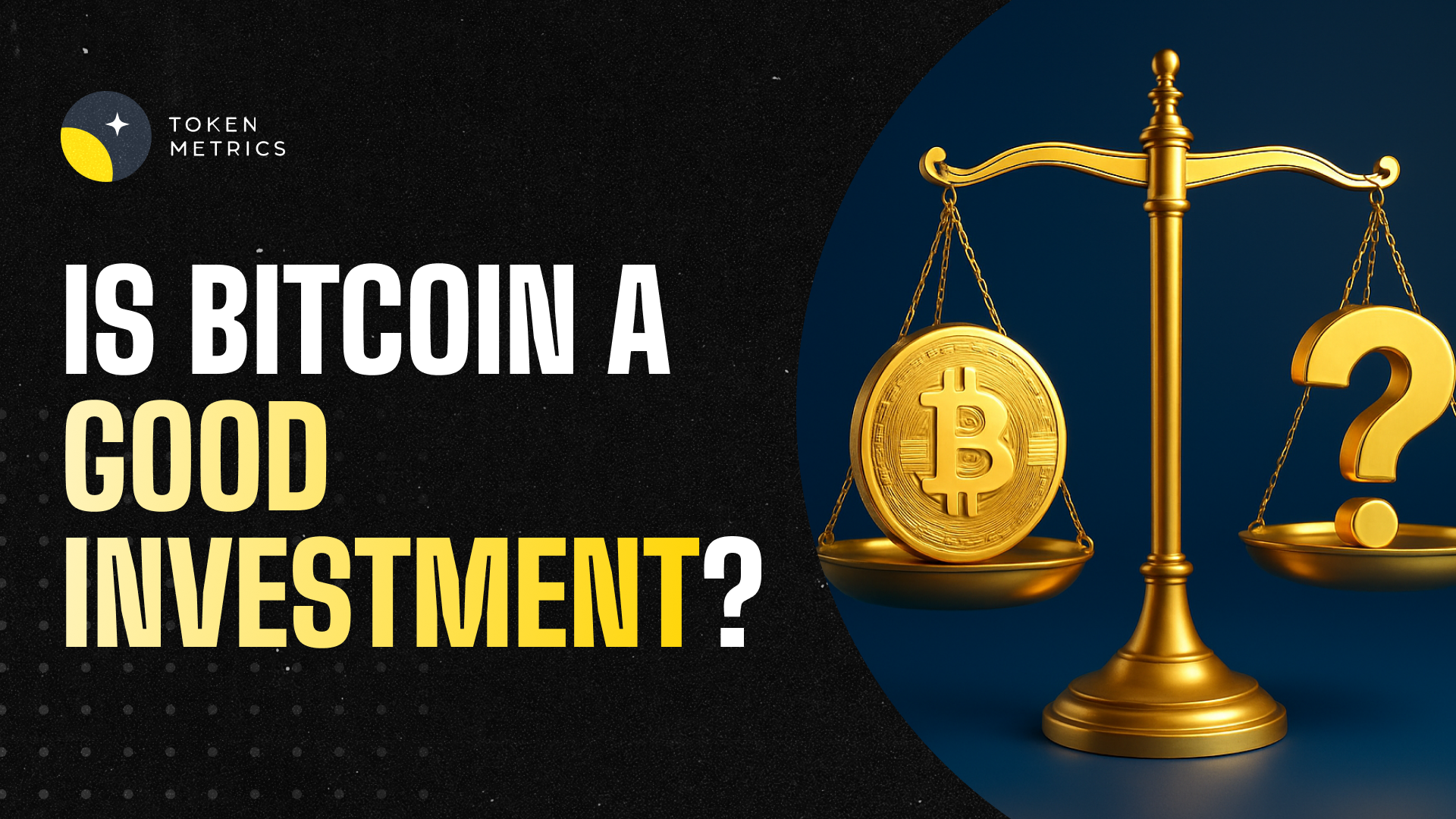Is Bitcoin a Good Investment? Key Insights for Potential Investors

Introduction to Digital Assets
Digital assets, such as bitcoin and other cryptocurrencies, represent a relatively new and distinct asset class characterized by high speculation and substantial risk. Unlike traditional investments, digital currencies operate in a decentralized manner, meaning they are not controlled by central banks or governments. This decentralization contributes to their unique valuation dynamics, which are heavily influenced by investor sentiment and real-time market data rather than traditional economic indicators. However, the cryptocurrency market is largely unregulated, making it susceptible to fraud and manipulation.
Investing in digital currencies requires a solid understanding of the regulatory environment, as agencies like the Securities and Exchange Commission (SEC) continue to shape the landscape with evolving rules and approvals. For example, the SEC has authorized bitcoin ETFs, which have made it easier for investors to gain exposure to the crypto market without directly holding the currency. In 2024, the SEC approved the trading of spot bitcoin and ether exchange-traded funds (ETFs). The SEC's historical relationship with the cryptocurrency market has been skeptical due to concerns about market volatility and investor protections. Despite these advances, it remains crucial for investors to seek personalized investment advice and carefully assess their risk tolerance before venturing into this highly speculative space.
Understanding Bitcoin
Bitcoin is a pioneering digital currency that leverages blockchain technology and sophisticated computer code to secure transactions and regulate the creation of new units. This technological foundation makes bitcoin a highly volatile asset, with prices that can fluctuate dramatically over short periods. Bitcoin's price has fluctuated significantly since its inception in 2009. The value of bitcoin is primarily determined by what investors are willing to pay, which means its price is subject to rapid changes driven by market sentiment and speculative trading.

One of bitcoin’s defining features is its limited supply, capped at 21 million coins. This scarcity can drive its price higher, contributing to the potential for significant returns. Bitcoin historically has offered the potential for high returns. However, the limited supply also intensifies volatility, as shifts in demand can cause sharp price swings. Unlike traditional currencies or commodities such as gold, bitcoin is not backed by any physical asset or government guarantee, making its intrinsic value difficult to ascertain. Consequently, investing in bitcoin is considered a high-risk endeavor that demands careful evaluation.
Evaluating Investment Options
For investors interested in gaining exposure to bitcoin without directly purchasing or trading the currency, bitcoin ETFs present a viable alternative. These financial products allow investors to participate in the crypto market through regulated exchange-traded funds, potentially reducing some of the risks associated with direct ownership. The introduction of bitcoin ETFs has contributed to greater acceptance of cryptocurrencies among regulators and institutional investors. Futures-based bitcoin ETFs must regularly 'roll' their holdings, potentially underperforming compared to spot bitcoin ETFs. However, it remains essential to understand the fees involved in trading and transactions, as these can impact overall returns.
Diversification remains a cornerstone of sound investment strategies. Incorporating index funds and other traditional assets alongside digital currencies can help balance a portfolio and mitigate risk. While digital assets offer the allure of high returns, they also come with heightened volatility and uncertainty. Crypto exchanges lack basic consumer protections found in traditional financial products. Consulting a financial planner or investment advisor can provide personalized investment advice tailored to an individual’s financial goals, risk tolerance, and overall portfolio allocation.
Assessing Risks and Benefits
Investing in bitcoin and other cryptocurrencies involves substantial risks, including the possibility of significant financial losses. The regulatory environment surrounding digital assets is still evolving, and changes in laws or enforcement policies by bodies such as the Securities and Exchange Commission can dramatically affect market valuations. Furthermore, the lack of central bank oversight means that digital currencies are more exposed to market manipulation and extreme price swings. Transactions involving Bitcoin are irreversible, which can lead to significant loss if credentials are forgotten. Investors should consider only investing money in Bitcoin that they are comfortable losing.
Despite these risks, the potential rewards of investing in bitcoin can be compelling. Its limited supply and increasing adoption have made it attractive to some investors seeking alternatives to traditional assets. Nevertheless, it is vital to weigh these benefits against the inherent risks and to consider other investment options that may better align with one’s financial objectives and risk appetite.

Comparing to Other Cryptocurrencies
While bitcoin remains the largest and most recognized cryptocurrency by market cap, other digital currencies like ethereum and litecoin offer different features and potential advantages. These alternative cryptocurrencies, often referred to as altcoins, may provide unique use cases or technological innovations that appeal to certain investors. However, similar to bitcoin, they are also subject to high volatility and speculative trading, which can result in both substantial gains and losses.
Investors should carefully evaluate factors such as market capitalization, trading volume, and price volatility when considering other cryptocurrencies. Diversifying across multiple digital assets can help spread risk but requires thorough research and ongoing monitoring of market developments. Staying informed about emerging technologies and regulatory changes is critical in this fast-evolving market.

Making a Good Investment Decision
Determining whether bitcoin is a good investment depends heavily on an individual investor’s financial goals, risk tolerance, and preferred investment strategies. It is essential to conduct comprehensive research and stay updated on market trends, regulatory shifts, and valuation changes to make informed financial decisions. Seeking personalized investment advice from a qualified financial planner can help tailor strategies that align with one’s unique circumstances.
Diversification remains a key principle in building a resilient portfolio. Combining bitcoin and other digital assets with traditional investments such as stocks, bonds, and index funds can help manage risk and improve potential returns. Investments in Bitcoin should only make up a small portion of an investor's portfolio, usually capped at 5% or 10%. Investors should always be prepared for the possibility of significant losses, given the highly volatile nature of cryptocurrencies, and avoid allocating more money than they are willing to lose.

Conclusion and Next Steps
Investing in bitcoin and other digital assets can offer exciting opportunities for high returns but comes with considerable risks and uncertainties. Prospective investors must carefully evaluate the benefits and drawbacks, considering the speculative nature of these assets and the potential for substantial financial losses. The IRS currently treats cryptocurrencies as property, which means cryptocurrency transactions are taxable events. Staying informed about market developments, regulatory changes, and evolving technologies is crucial for making sound investment decisions.
Engaging with financial professionals to obtain personalized investment advice can provide valuable guidance tailored to individual goals and risk profiles. As the cryptocurrency market continues to evolve, maintaining a cautious and well-informed approach is essential. By thoughtfully considering the risks and rewards, investors can make prudent decisions that contribute to achieving their long-term financial objectives while navigating the complexities of digital asset investing.
Create Your Free Token Metrics Account

.png)




%201.svg)
%201.svg)


%201.svg)










.svg)




.png)